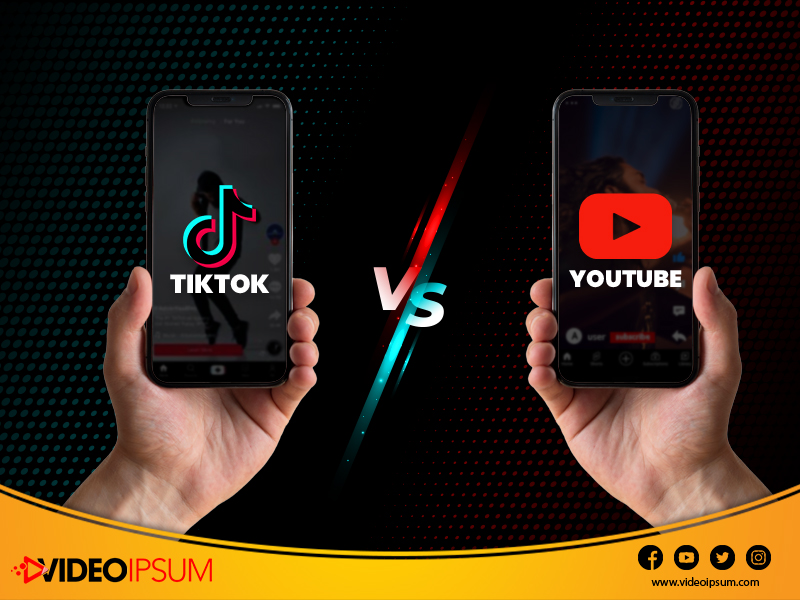

The Pandemic has brought a lot of career options to a lot of people. One of the emerging career choices that can be seen in the post-pandemic world. Many businesses as well have gone online and started using videos as their primary marketing tool. In this period, a video streaming platform rose which disrupted the industry. Today it is giving tough competition to our old video streaming platform YouTube. The application is TikTok, and today this post will discover which one is better for video content creators, YouTube or TikTok?
Factors to consider while making the decision:
● Audience -
If you are marketing to a younger audience, such as teens aka Gen-Z, TikTok is the right option for you. Statistically, almost half of TikTok users are between the ages of 18-34 years in the United States. This means the application is more popular among Gen-Z and adults are steadily becoming users as well.
If you are reaching the millennials as your audience and customer base, then YouTube is the right choice for you. It can be seen as more authoritative and according to the Ypulse survey, YouTubers were more trusted public figures, beating the TikTokers by scoring 31% and 12% respectively.
● Content format and length -
TikTok is known for its short-length videos which have a maximum time limit of 3 minutes. The platform recommends an optimal 21 to 34 seconds so that the viewers can be interested. An average video length on TikTok is around 15-60 seconds.
In the case of YouTube, the average length of videos is 11.7
minutes. Verified accounts on the application can upload a maximum of 2 hours
long videos while unverified accounts can upload videos that can be a maximum
of 15 minutes long.
● The niches -
All thanks to TikTok, bite-sized videos have become more digestible and the creators are using the platform to spread content in memes, lip sync, dance, and educational videos. Video concepts like random finds go extremely viral on the application. Small and big brands can team up with influencers to create simple and viral videos. Many brands have gone all sold out because of a viral video on TikTok. You can also use TikTok Insights to know what works for each generation.
For YouTube, popular videos follow niches like how-to videos,
comedy skits, product reviews, music videos, etc. YouTube tutorials tend to
have a more serious tone whereas showing off products is not that easy in the
format of a YouTube video.
● Ad formats -
The type of ads that are available on TikTok is -
➔ Top View: this is an
attention-grabbing and distraction-free video format that runs for 60 seconds.
➔ In-Feed Ads: This is a
native-inspired ad type that will integrate into your audience's "for
you" page.
➔ Branded Hashtag
Challenge: This is user-generated content that uses your brand's
"hashtag" campaign.
➔ Branded Effects: This is a type of ad that uses the brand's stickers, special effects, and filters.
The type of ads that are available on YouTube are -
➔ Skippable
video ads: These ads let the viewers skip the ad after 5 seconds.
➔ Non-skippable
video ads: These types of ads don't let the viewers skip over, and are
usually 10-15 seconds long.
➔ Bumper ads: These ads are
typically 6 seconds long and need to be viewed before the video starts to watch
the video.
➔ Overlay ads: This is the type that is only available on desktops and takes the lower 20% of the screen.
To conclude, TikTok has around 318.2 million organic traffic, and YouTube has 646 billion. Selecting which platform you want to use depends on the type of your audience and product.
However, if you have decided to opt for YouTube videos, then you
must check how VideoIpsum is contributing its precious promotional strategies.
You can browse the site to get your videos promoted today and add more viewers
to the bucket.
Popular Posts
May 15,2024
April 27,2023
December 26,2024
August 24,2020